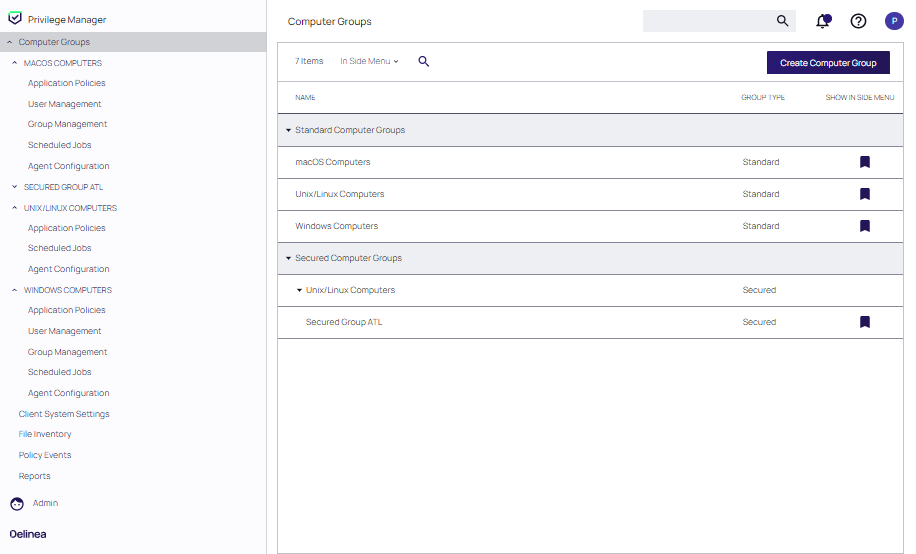Computer Groups
Computer Groups organize content by platform or operating system. From each operating system, you can define Computer Groups. Click Computer Groups in the left navigation panel.
There a two types of computer groups as indicated by the Standard Computer Groups and Secured Computer Groups headers. A computer can be in multiple Standard groups, but only one Secured group. Secured groups can be used to apply RBAC type controls that define who can see data associated to those computers and who can create or read policies for those computers.
Standard Computer Groups
The Privilege Manager application provides the following three built-in Computer Groups for the Standard Computer Groups:
- Windows Computers
- macOS Computers
- Unix/Linux Computers
These computer groups can not be edited. Refer to Creating Computer Groups to add, customize or edit a new computer group.
Refer to Creating Standard Computer Groups for instructions.
Secured Computer Groups
Refer to Creating Secured Computer Groups for specific instructions when creating a Secured Computer Group.
Computer Group Management
Expand tree for any Computer Group in the left navigation. Computer Groups, called resource targets (as configured in Application Control), are specified sets of computers that meet certain criteria, that are targeted by certain policies and scheduled tasks. Each computer group addresses the following.
| Default Computer Group | Resources |
|---|---|
| Windows Computers | Application Policies User Policies Group Policies Scheduled Jobs Agent configuration |
| macOS Computers | Application Policies User Policies Group Policies Scheduled Jobs Agent configuration |
| Unix/Linux Computers | Application Policies Scheduled Jobs Agent configuration |
Refer to the following sections for more information:
-
Application Policies (Windows, macOS, Unix/Linux)
- Policies associated with Application Control that you establish using the Create Wizard policy.
- User Management (Windows, macOS)
- Group Management (Windows, macOS)
- Local security control that pertains to specific groups of users.
-
Scheduled Jobs (Windows, macOS, Unix/Linux)
- Client tasks that you designate to run on certain dates and at certain times. Privilege Manager sets many scheduled jobs to Active by default.
-
Agent Configuration (Windows, macOS, Unix/Linux)
